Russian license plates: What do they mean?
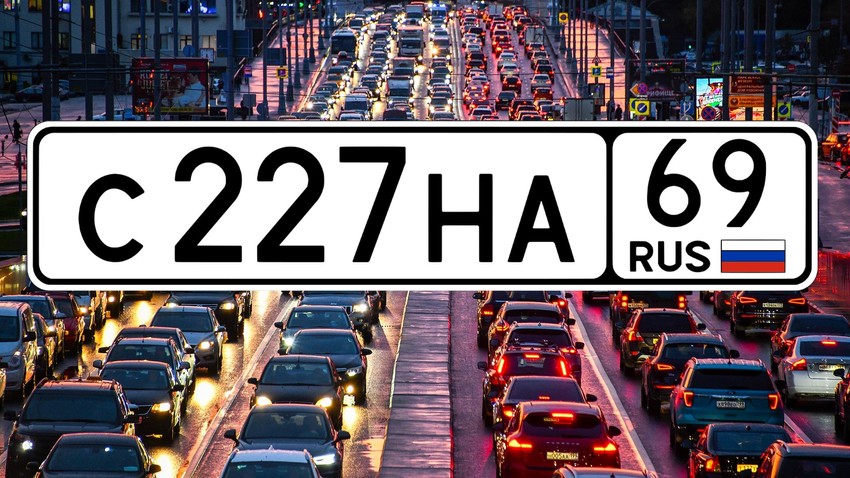
The Russian registration plate consists of several parts. First comes a registration code and series that includes a unique combination of numbers and letters. It always looks like a letter - three numbers - and another two letters.
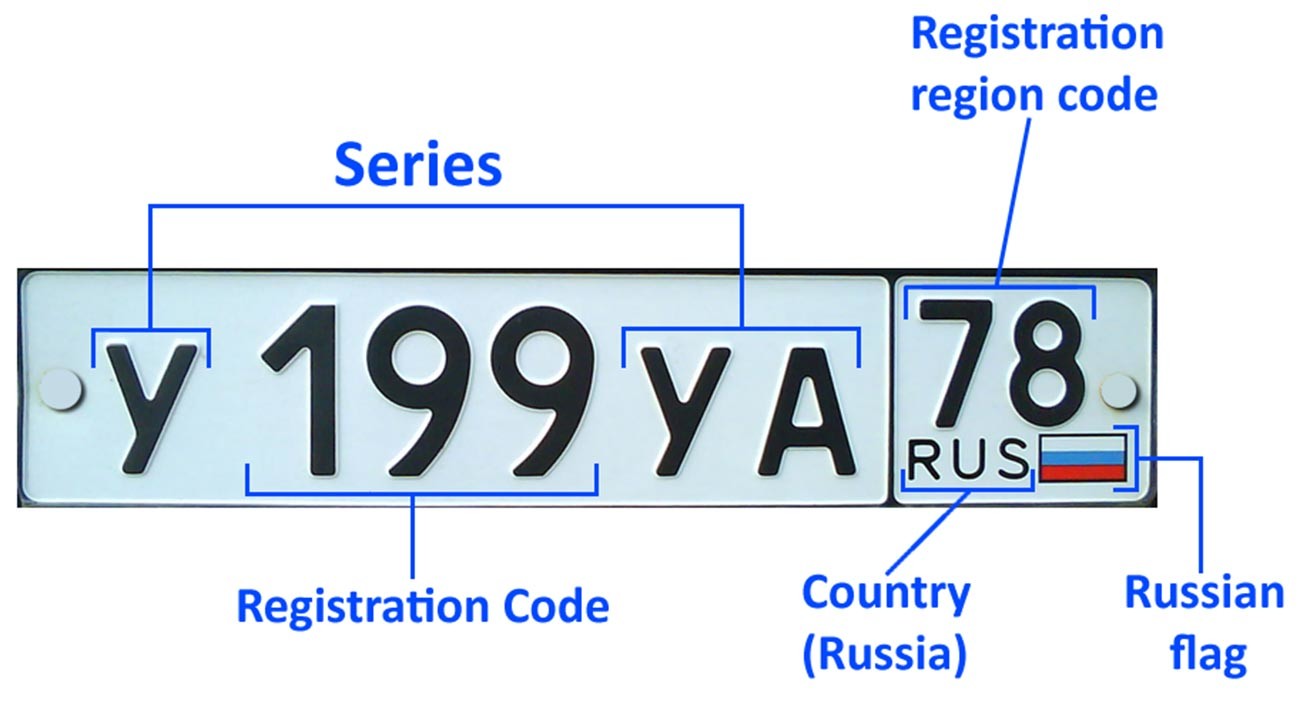
Interestingly, only 12 letters of the Russian alphabet are used in these plates and only those that have spelling analoges in the Latin alphabet, so as not to confuse foreigners in case a car registered in Russia crosses the border or a car from a foreign country has an incident in Russia. Such Cyrillic letters as ‘Щ’ or ‘Ы’ are not used. Read more about this rule and the evolution of the Russian license plates here.
The registration code and series is then followed by a square separated by a line. The Russian flag and country name RUS are depicted, as well as the region registration code in it.
Recently, the authorities allowed the use of shorter, more quadratic number plates for cars and vehicles, such as motorcycles, which have no space for usual Russian plates. Here is how elements are arranged on such number plates.
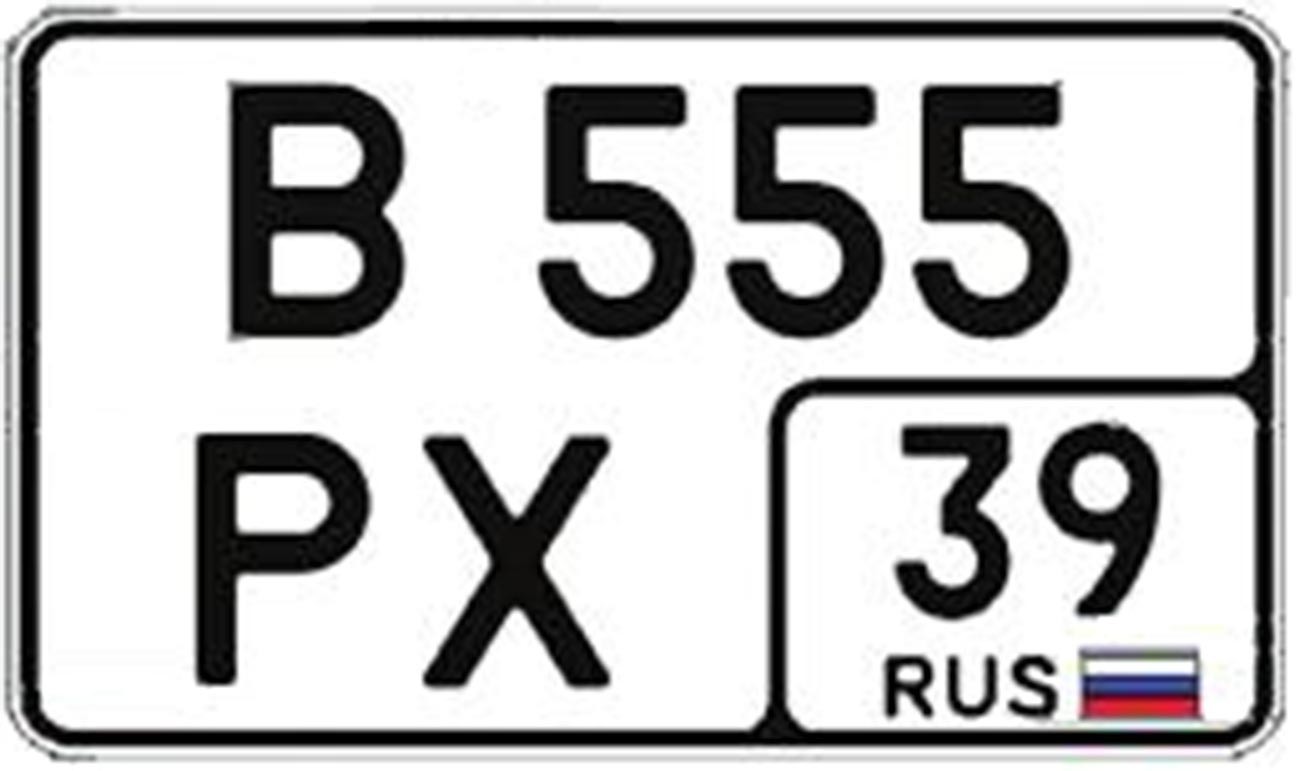
What does the regional code mean?
Actually, it matches the code that each Russian region was allocated. So, how would you recognize this code? It’s very easy… in theory.
According to the Russian Constitution, all 85 Russian regions are listed in a certain order and each of the regions has its own number which actually is also the car code.
The first 21 republics on the list are in alphabetical order and each of them, from Adygea to the Chuvash Republic, have the numbers from 01 to 21. The 22nd republic of Crimea has the number 82, as it joined the list later.
The six territories which in Russian are called “krai” follow next. From the Altai Krai to the Khabarovsk Krai, they are also listed in alphabetical order. They are spelled in Russian, of course, and have numbers 22 through to 27.
Another three “krais” (Kamchatsky, Permsky and Zabaikalsky) are situated somewhere in the middle of the regions’ list, because, as subjects of the Russian Federation, they were formed later. For example, Zabaikalsky Krai has number 75, as it appeared only in 2008 after the referendum, which united the former Chita Oblast and Agin-Buryat Autonomous Okrug.
From number 28, regions that are called “Oblast in Russian” begin, starting with Amur Oblast (28) and finishing with Yaroslavl Oblast (76) - there are 46 oblasts in total.
Surprisingly, after that, Moscow (77) and St. Petersburg (78) are listed, because they are separate administrative subjects. And, as they are huge cities with millions of cars registered there, they have more than one car registration code. Moscow’s main code is 77, but it also has the numbers 97, 99, 177, 197, 199, 777, 797 and 799.

Car sharing vehicles with Moscow numbers
Artur Lebedev/SputnikWhile St. Petersburg also has the numbers 98, 178 and 198. Several other regions also have more than one code, but usually they “play” with the same numbers: 61, 161 and 761 for Rostov Oblast, for example.
After Moscow and St. Petersburg, the list is completed with the Jewish Autonomous Oblast (79) and four autonomous “okrugs” (83-89). Sevastopol, another city of federal classification, finishes the list with the number 92. Kazakhstan’s Baikonur, which houses the Russian cosmodrome is administratively a Russian city also has its own code - 94.
Do all Russians know these numbers?
Definitely not! Probably only very engaged car enthusiasts can name all of them, but we haven’t met any yet! However, one can guess the region by number - for example, if it’s neighboring the region one knows in the alphabetic order.
Finally, there are special apps which identify the region by its code in a second. And, in fact, many Russians play a kind of a game, checking one’s knowledge of the regions while on the road.
Numbers of non-Russian territories
There are self-proclaimed states which are partly recognized, but have their own registration system. These numbers look similar to Russian ones. They don't refer to Russia, but they are recognized by Russia.

If you ever see this kind of license plate on the road, it means it’s a vehicle of the Donetsk People’s Republic (DPR). While ‘LPR’ code and flag mean the Luhansk People’s Republic.
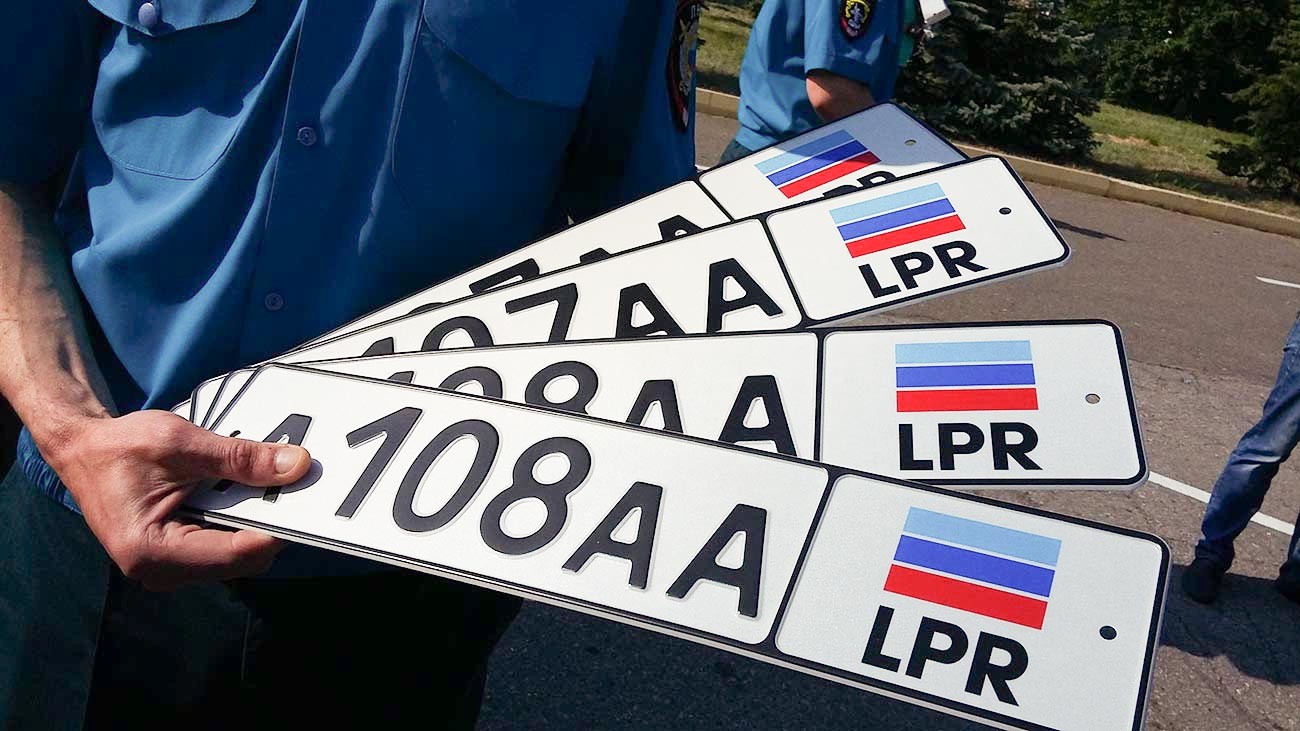
The partly recognized Abkhazian republic also has its own license plate with the ‘ABH’ code and a flag.
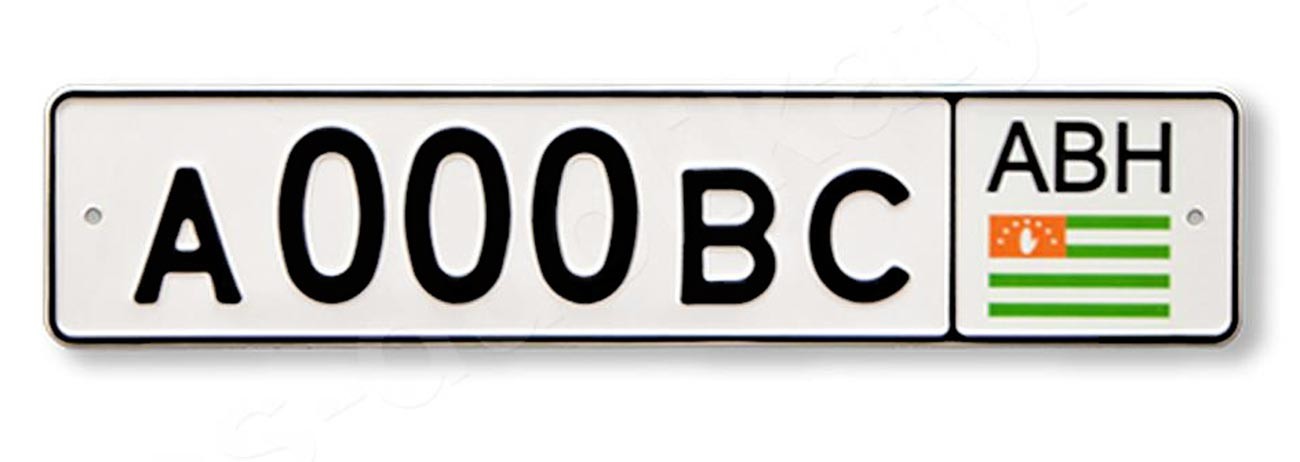
Here’s the full list of Russian regional codes:
01 Republic of Adygea
02, 102, 702 Republic of Bashkortostan
03 Republic of Buryatia
04 Altai Republic
05 Republic of Dagestan
06 Republic of Ingushetia
07 Kabardino-Balkar Republic
08 Republic of Kalmykia
09 Karachay-Cherkess Republic
10 Republic of Karelia
11 Komi Republic
12 Mari El Republic
13, 113 Republic of Mordovia
14 Sakha Republic
15 Republic of North Ossetia–Alania
16, 116, 716 Republic of Tatarstan
17 Tuva Republic
18 Udmurt Republic
19 Republic of Khakassia
(20), 95 Chechen Republic
21, 121 Chuvash Republic
22, 122 Altai Krai
23, 93, 123, 193 Krasnodar Krai
24, 84, 88, 124 Krasnoyarsk Krai
25, 125 Primorsky Krai
26, 126 Stavropol Krai
27 Khabarovsk Krai
28 Amur Oblast
29 Arkhangelsk Oblast
30 Astrakhan Oblast
31 Belgorod Oblast
32 Bryansk Oblast
33 Vladimir Oblast
34, 134 Volgograd Oblast
35 Vologda Oblast
36, 136 Voronezh Oblast
37 Ivanovo Oblast
38, 85, 138 Irkutsk Oblast
39, 91 Kaliningrad Oblast
40 Kaluga Oblast
41, 82 Kamchatka Krai
42, 142 Kemerovo Oblast
43 Kirov Oblast
44 Kostroma Oblast
45 Kurgan Oblast
46 Kursk Oblast
47, 147 Leningrad Oblast
48 Lipetsk Oblast
49 Magadan Oblast
50, 90, 150, 190, 750, 790 Moscow Oblast
51 Murmansk Oblast
52, 152 Nizhny Novgorod Oblast
53 Novgorod Oblast
54, 154 Novosibirsk Oblast
55 Omsk Oblast
56, 156 Orenburg Oblast
57 Oryol Oblast
58 Penza Oblast
59, 81, 159 Perm Krai
60 Pskov Oblast
61, 161, 761 Rostov Oblast
62 Ryazan Oblast
63, 163, 763 Samara Oblast
64, 164 Saratov Oblast
65 Sakhalin Oblast
66, 96, 196 Sverdlovsk Oblast
67 Smolensk Oblast
68 Tambov Oblast
69 Tver Oblast
70 Tomsk Oblast
71 Tula Oblast
72 Tyumen Oblast
73, 173 Ulyanovsk Oblast
74, 174, 774 Chelyabinsk Oblast
75, 80 Zabaykalsky Krai
76 Yaroslavl Oblast
77, 97, 99, 177, 197, 199, 777, 797, 799 Moscow
78, 98, 178, 198 St. Petersburg
79 Jewish Autonomous Oblast
83 Nenets Autonomous Okrug
86, 186 Khanty-Mansi Autonomous Okrug
87 Chukotka Autonomous Okrug
89 Yamalo-Nenets Autonomous Okrug
92 Sevastopol
94 Baikonur
(You can check out a detailed list here.)
If using any of Russia Beyond's content, partly or in full, always provide an active hyperlink to the original material.
Subscribe
to our newsletter!
Get the week's best stories straight to your inbox